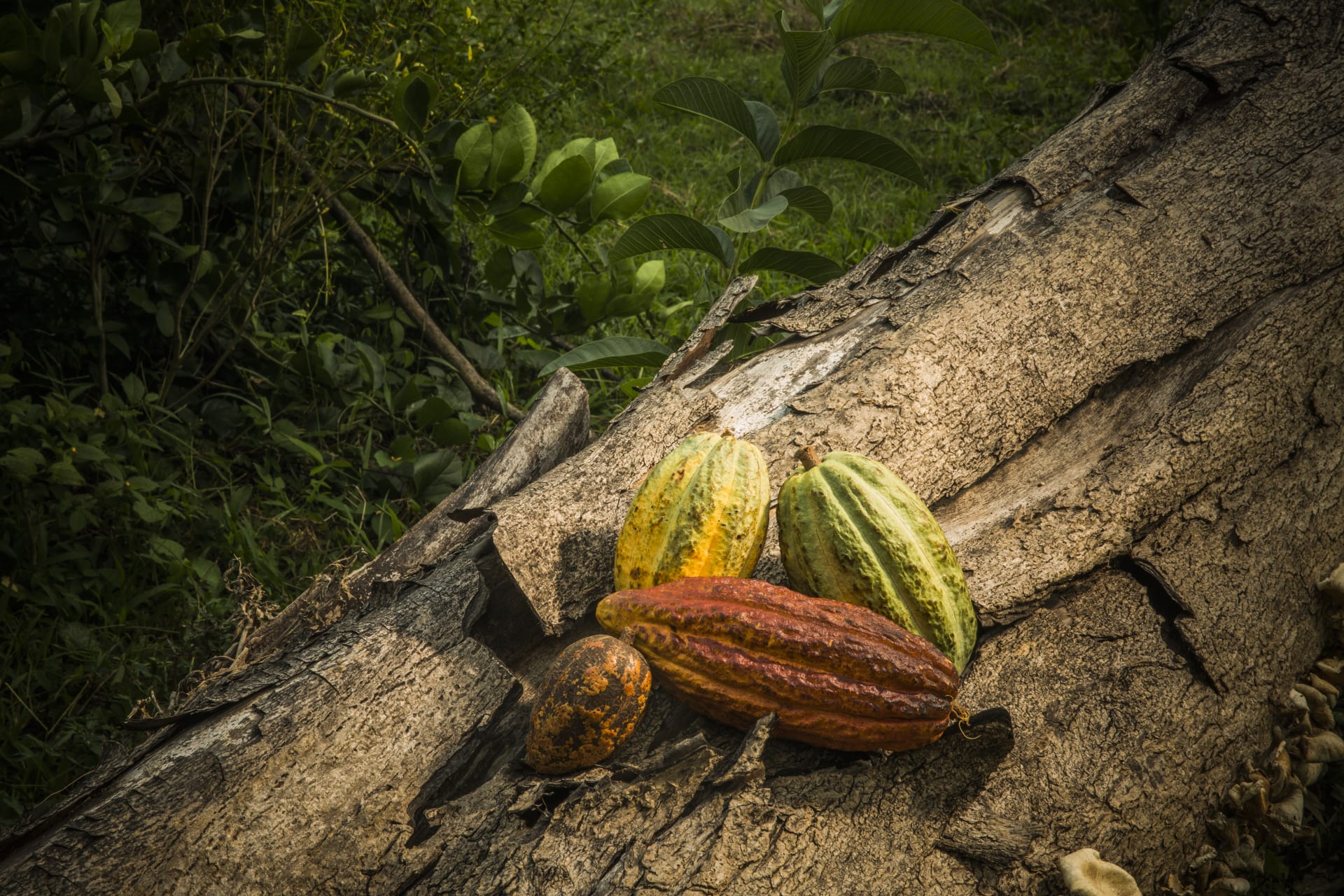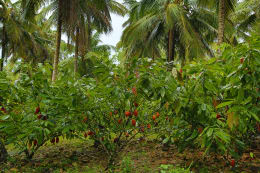Traceable cocoa: deforestation & carbon footprints

At Valrhona, 100% of our cocoa beans are routinely traced back to our producers around the world. This level of traceability is the basis for creating a fair and sustainable supply chain. It allows us to know where cocoa comes from, exactly who produced it, and whether it was produced in the right conditions.
Cocoa growing is responsible for the majority of chocolate production’s greenhouse gas emissions (1kg of cocoa emits 23.2kg of carbon dioxide on average worldwide), and 95% of its carbon footprint is due to deforestation.
To reduce its cocoa’s carbon footprint, Valrhona is fighting deforestation on several major fronts:
1- Traceable plots
To date, 86% of our cocoa can be traced back to its original plot. We plan to have 100% of our cocoa mapped by the end of 2024.
To achieve this, our partner growers' plots are geolocated and mapped. Mapping involves using GPS data to show cocoa plantations as polygons on a map, the aim being to ensure they are positioned outside of each country’s protected natural areas. Thanks to this level of traceability, we can now confirm that we have no producers within protected areas and that our growers are therefore not involved in deforestation.
2. Studying changes in tree cover
Mapping also allows us to measure changes in tree cover using satellite images. To do this, the GPS coordinates of our growers' plots are cross-referenced against tree cover maps dating from the last 20 years. While European legislation will require all cocoa importers to prove by December 30, 2024 that, as of 2020, their products haven’t come from plots located in deforested areas, Valrhona has chosen to go even further and measure its impact over 20 years.
3. Calculating our cocoa’s carbon footprint
On-the-ground studies conducted and certified by the NGO Nitidae in collaboration with our cocoa partners enable us to carry out surveys. These describe and quantify the carbon footprint of each plot and each kilogram of cocoa that Valrhona buys, as measured from the plot to our chocolate factory in Tain l'Hermitage.

These studies have been completed at the Millot plantation in Madagascar, whose entire harvest Valrhona has bought for over 30 years. We're particularly proud of the results, which show that cocoa from the Millot plantation has a carbon footprint of 0.57kg CO2/kg of cocoa (from the grower to theValrhona chocolate factory), compared with 23kg CO2/kg of cocoa on average.
Our ambition is to calculate all our cocoa’s carbon emissions so that we can identify their leading causes and target action aimed at reducing them.

Discover our cocoa partners
Through our online map, visitors can find out more about each of our partners, our relationship, our joint actions and impact, and the products created with the cocoa from the origin in question.


